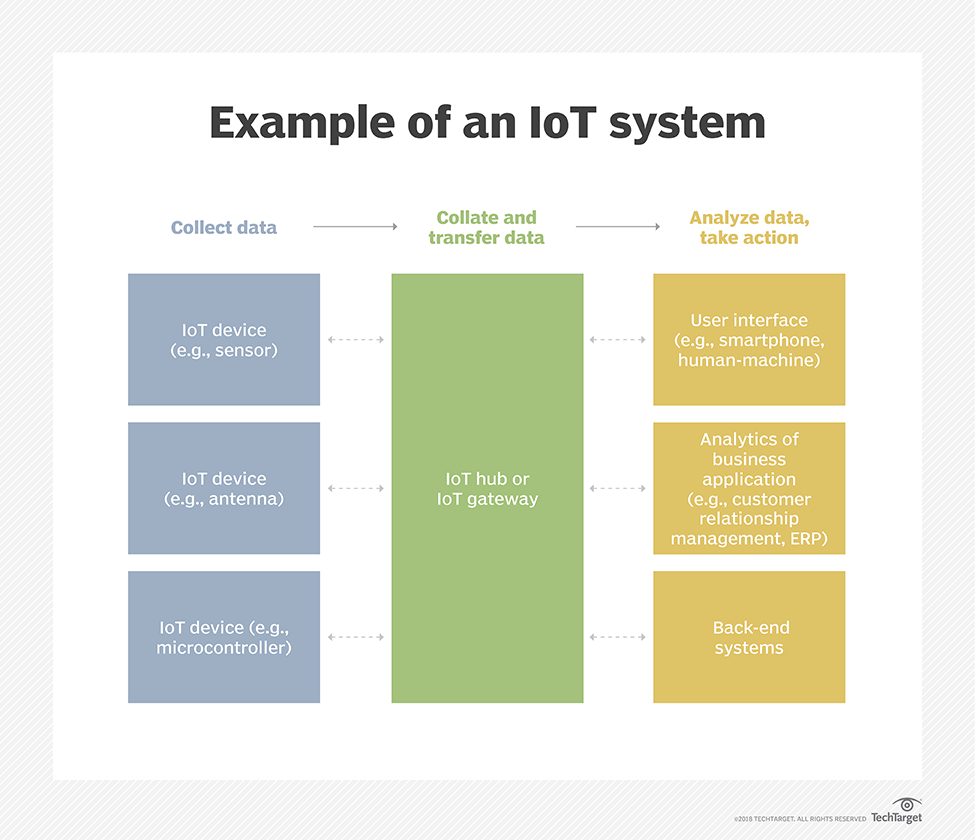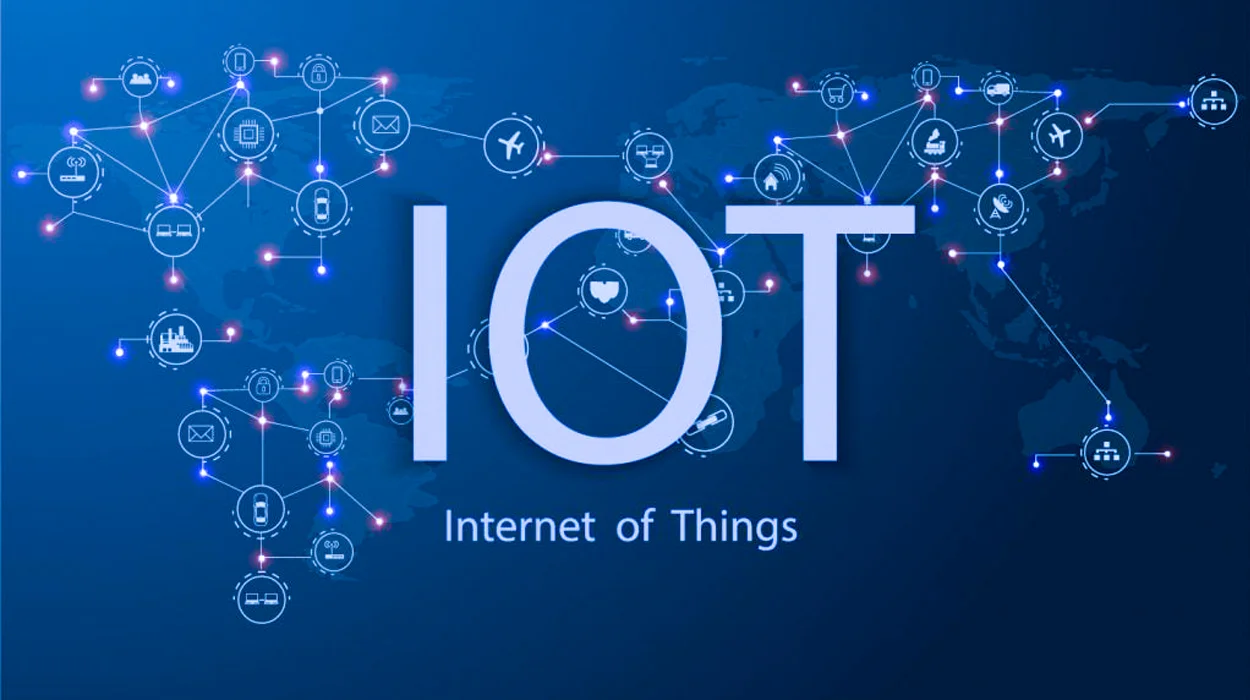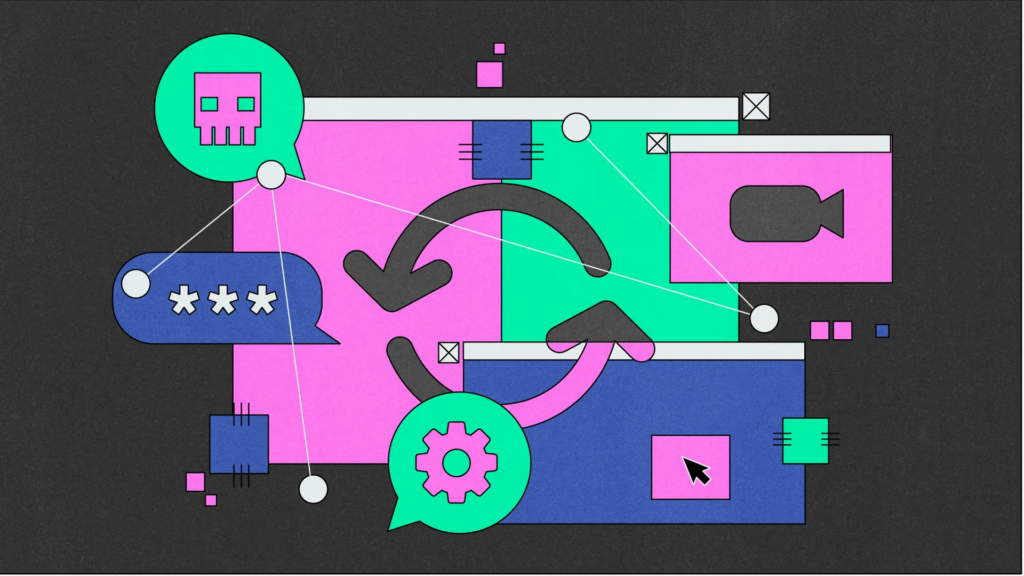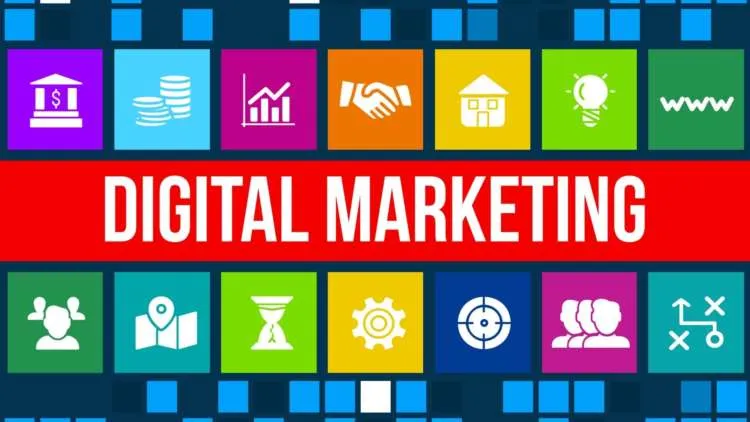The Internet of Things (IoT) refers to a network of interconnected physical devices, vehicles, appliances, and other objects embedded with sensors, software, and network connectivity, enabling them to collect and exchange data. These devices are typically equipped with unique identifiers and can communicate with each other and with humans over the internet.
The IoT allows objects to be sensed and controlled remotely, creating opportunities for automation, data analysis, and improved efficiency in various domains, such as home automation, industrial settings, healthcare, transportation, agriculture, and more. By connecting everyday objects to the internet, the IoT enables them to gather real-time data, share information, and respond intelligently to changes in their environment.
The underlying technologies of the IoT include wireless communication protocols, cloud computing, data analytics, and artificial intelligence. Wireless sensors and actuators embedded in IoT devices gather data, which is then transmitted to a central system or the cloud for processing and analysis. This data can be used to monitor and manage devices, make informed decisions, and trigger automated actions.
The IoT has the potential to revolutionize numerous industries by enabling increased automation, improved operational efficiency, cost savings, enhanced safety and security, and the development of innovative products and services. However, it also presents challenges related to privacy, security, data management, and interoperability, which need to be addressed for the widespread adoption and successful implementation of IoT solutions.
How does IoT work?
The Internet of Things (IoT) works through a combination of hardware, software, and network connectivity. Here’s a general overview of how IoT systems typically function:
- Devices and Sensors: IoT devices, also known as “smart” or “connected” devices, are embedded with sensors, actuators, and processors that allow them to gather data and perform actions. These devices can include various objects such as appliances, wearables, industrial machinery, vehicles, and more.
- Connectivity: IoT devices are connected to the internet through various communication technologies, such as Wi-Fi, cellular networks (3G, 4G, 5G), Bluetooth, Zigbee, or other wireless protocols. This connectivity enables the devices to transmit and receive data to and from other devices and systems.
- Data Collection: The sensors within IoT devices collect data from the surrounding environment. This data can include information about temperature, humidity, pressure, location, movement, and much more, depending on the purpose of the device.
- Data Transmission: The collected data is transmitted from the IoT devices to a central system or the cloud. This can occur in real-time or at scheduled intervals, depending on the application and the requirements.
- Data Processing and Analytics: The data received from the devices is processed and analyzed in the cloud or a central server. This involves applying algorithms, machine learning, and data analytics techniques to extract valuable insights, identify patterns, and make informed decisions based on the data.
- Application and Control: Once the data has been analyzed, the results can be utilized to trigger specific actions or provide information to users. This can involve sending commands back to the IoT devices to control their behavior, sending alerts or notifications to users, or integrating the data into other applications and systems.
- User Interface: IoT systems often have user interfaces that allow users to interact with the devices, monitor their status, configure settings, and access data. These interfaces can be web-based dashboards, mobile applications, or dedicated control panels.
The above steps represent a simplified overview of how IoT typically works. The actual implementation and architecture of IoT systems can vary based on the specific application, industry, and requirements. Additionally, security measures such as encryption, authentication, and access control are crucial to ensure the privacy and integrity of IoT data and devices

Why is IoT important?
The Internet of Things (IoT) holds significant importance and has the potential to bring about transformative changes in various domains. Here are some key reasons why IoT is important:
- Improved Efficiency and Productivity: IoT enables automation and the exchange of real-time data, leading to increased efficiency and productivity. By connecting and integrating devices, processes can be streamlined, and tasks can be automated, reducing manual effort and human error.
- Cost Savings: IoT can help businesses and industries save costs by optimizing operations, minimizing downtime, and reducing energy consumption. For example, in industrial settings, IoT sensors can monitor equipment performance, predict maintenance needs, and prevent costly breakdowns.
- Enhanced Decision-Making: IoT generates vast amounts of data that can be analyzed to gain valuable insights. By leveraging data analytics and artificial intelligence techniques, organizations can make data-driven decisions, improve planning and forecasting, and identify new business opportunities.
- Improved Safety and Security: IoT enables the implementation of advanced safety and security systems. For instance, in smart homes, IoT devices can detect intrusions, monitor for fires or gas leaks, and provide remote surveillance. In industries, IoT can enhance worker safety by monitoring hazardous environments or providing real-time alerts in case of emergencies.
- Healthcare and Well-being: IoT has the potential to revolutionize healthcare by enabling remote patient monitoring, wearable devices, and smart healthcare systems. It can facilitate early detection of medical conditions, provide personalized treatment plans, and improve the overall quality of care.
- Environmental Impact: IoT can contribute to sustainability efforts by optimizing energy consumption, monitoring environmental factors, and promoting efficient resource management. For instance, smart grids can balance energy supply and demand, while smart agriculture systems can optimize water usage and reduce pesticide application.
- Innovation and New Business Models: IoT opens up opportunities for innovation, entrepreneurship, and the development of new business models. Startups and established companies can create innovative products and services by leveraging IoT technologies, leading to economic growth and job creation.
- Connected Living: IoT enables the creation of smart homes, smart cities, and interconnected ecosystems. It can enhance convenience, comfort, and quality of life by automating daily tasks, improving energy efficiency, and providing seamless connectivity between devices and services.
While IoT offers numerous benefits, it also poses challenges related to privacy, security, interoperability, and data management. Addressing these challenges is crucial for realizing the full potential of IoT and ensuring its responsible and sustainable deployment.
What are the benefits of IoT to organizations?
The Internet of Things (IoT) brings several benefits to organizations across various industries. Here are some key benefits of IoT:
- Operational Efficiency: IoT enables organizations to optimize their operations by automating processes, reducing manual effort, and improving productivity. By connecting devices, machines, and systems, organizations can gather real-time data and gain insights into operational performance, allowing them to identify bottlenecks, streamline workflows, and make data-driven decisions to enhance efficiency.
- Cost Savings: IoT can lead to significant cost savings for organizations. By monitoring and managing assets in real-time, organizations can optimize resource utilization, reduce maintenance costs, and prevent costly breakdowns through predictive maintenance. Additionally, IoT can help organizations save on energy consumption by implementing smart energy management systems.
- Improved Customer Experience: IoT enables organizations to offer personalized and enhanced customer experiences. By gathering data from connected devices, organizations can gain insights into customer preferences, behavior, and usage patterns, allowing them to deliver customized products, services, and recommendations. IoT can also facilitate proactive customer support and enable remote monitoring and troubleshooting.
- Data-driven Insights: IoT generates vast amounts of data, which organizations can leverage to gain valuable insights. By analyzing IoT data using advanced analytics and machine learning techniques, organizations can identify patterns, trends, and anomalies that can inform strategic decision-making, product development, and operational optimizations. These data-driven insights can lead to innovation, competitive advantage, and new revenue streams.
- Enhanced Safety and Security: IoT enables organizations to enhance safety and security measures. For example, in manufacturing environments, IoT sensors can monitor equipment conditions, detect potential hazards, and trigger alerts to prevent accidents. IoT can also improve security by providing real-time monitoring and detection of unauthorized access or suspicious activities.
- Supply Chain Optimization: IoT can revolutionize supply chain management by enabling real-time visibility and tracking of goods, assets, and inventory. This visibility helps organizations streamline logistics, optimize inventory levels, improve demand forecasting, and enhance overall supply chain efficiency. IoT can also enable organizations to monitor environmental conditions during transportation, ensuring the quality and safety of goods.
- Innovation and New Business Models: IoT opens up opportunities for organizations to innovate and develop new business models. By leveraging IoT technologies, organizations can create innovative products, services, and experiences that meet evolving customer needs. IoT can also enable organizations to explore new revenue streams through data monetization, subscription models, and value-added services.
- Competitive Advantage: Organizations that successfully embrace IoT can gain a competitive edge in the market. By leveraging IoT technologies to improve operational efficiency, customer experience, and innovation capabilities, organizations can differentiate themselves from competitors, attract new customers, and retain existing ones.
It’s important for organizations to consider the security, privacy, and data governance aspects when implementing IoT solutions to ensure the responsible and secure use of IoT technologies.
What are the pros and cons of IoT?
The Internet of Things (IoT) brings various advantages and opportunities, but it also poses challenges and risks. Here are some of the pros and cons of IoT:
Pros:
- Automation and Efficiency: IoT enables automation of tasks and processes, leading to increased efficiency, reduced manual effort, and improved productivity.
- Data-driven Insights: IoT generates vast amounts of data that can be analyzed to gain valuable insights, identify patterns, and make informed decisions, fostering innovation and enabling data-driven strategies.
- Improved Decision-Making: Real-time data collection and analysis provided by IoT devices empower organizations to make timely and accurate decisions, enhancing operational efficiency and effectiveness.
- Cost Savings: IoT can lead to cost savings by optimizing resource utilization, reducing maintenance costs through predictive maintenance, and improving energy efficiency.
- Enhanced Safety and Security: IoT enables organizations to enhance safety and security measures by monitoring and detecting potential hazards, securing premises, and providing real-time alerts in case of emergencies.
- Improved Customer Experience: IoT enables personalized and enhanced customer experiences through customized products, services, proactive support, and seamless connectivity.
- Innovation and New Business Models: IoT opens up opportunities for innovation, new revenue streams, and the development of new business models, fostering entrepreneurship and economic growth.
Cons:
- Privacy and Security Risks: IoT introduces new security and privacy concerns, as connected devices may be vulnerable to cyberattacks, data breaches, and unauthorized access. Protecting IoT devices and data from potential threats is crucial.
- Interoperability Challenges: IoT devices and systems from different manufacturers may use different protocols and standards, making interoperability and integration complex, hindering seamless connectivity and hindering widespread adoption.
- Data Overload and Management: IoT generates vast amounts of data that can overwhelm organizations’ data storage, processing, and management capabilities. Extracting actionable insights from the data can be challenging.
- Complexity and Technical Challenges: Implementing and managing IoT systems can be complex, requiring expertise in hardware, software, connectivity, and data analytics. Integrating IoT into existing infrastructure and legacy systems can be challenging.
- Ethical and Legal Concerns: IoT raises ethical and legal considerations, such as data ownership, consent, and privacy. Organizations need to ensure compliance with regulations and ethical guidelines when collecting and using personal data.
- Reliability and Downtime: IoT systems heavily rely on network connectivity and robust infrastructure. Network outages, connectivity issues, or system failures can disrupt operations and lead to downtime.
- Dependency on Connectivity: IoT devices require reliable connectivity to function effectively. Poor connectivity or network disruptions can limit the functionality and effectiveness of IoT systems.
It’s important to consider these pros and cons when implementing IoT solutions, addressing challenges, and mitigating risks to ensure the successful and responsible deployment of IoT technologies.
IoT standards and frameworks
Several standards and frameworks have been developed to address the challenges of interoperability, security, and connectivity in the Internet of Things (IoT). Here are some key standards and frameworks commonly used in the IoT domain:
- IoT Connectivity Standards:
- MQTT (Message Queuing Telemetry Transport): A lightweight publish-subscribe messaging protocol designed for IoT devices with limited bandwidth and resources.
- CoAP (Constrained Application Protocol): A specialized web transfer protocol for constrained devices and networks.
- Bluetooth Low Energy (BLE): A wireless communication technology optimized for low power consumption and short-range connectivity.
- Zigbee: A low-power wireless communication protocol for home automation and industrial applications.
- LoRaWAN (Long Range Wide Area Network): A low-power wide area network protocol designed for long-range communication with low data rates.
- NB-IoT (Narrowband IoT): A cellular network technology designed specifically for IoT devices requiring low power consumption and wide coverage.
- IoT Security Standards:
- IoT Security Foundation: An organization that promotes best practices, frameworks, and guidelines for IoT security.
- IEC 62443: A series of standards for security in industrial automation and control systems, applicable to IoT devices in industrial environments.
- ISO/IEC 27000 series: A family of standards for information security management systems, which can be applied to IoT security.
- NIST Cybersecurity Framework: A framework developed by the National Institute of Standards and Technology (NIST) to improve cybersecurity across various sectors, including IoT.
- IoT Data Standards and Protocols:
- JSON (JavaScript Object Notation): A lightweight data interchange format commonly used for IoT data communication.
- OGC (Open Geospatial Consortium) standards: Standards for geospatial data and services that can be applied in IoT systems involving location-based data.
- SensorML: An XML-based standard for describing sensors and their capabilities.
- OPC UA (Unified Architecture): A machine-to-machine communication protocol for industrial automation that ensures interoperability and security.
- IoT Frameworks and Platforms:
- IoTivity: An open-source framework for building IoT applications and enabling interoperability across various devices and platforms.
- Eclipse IoT: An open-source community that provides a set of frameworks and tools for developing IoT solutions.
- Azure IoT Suite: Microsoft’s cloud-based IoT platform that offers tools and services for building and managing IoT applications.
- AWS IoT: Amazon Web Services’ platform for building, managing, and analyzing IoT applications and devices.
- Google Cloud IoT Core: Google’s cloud-based platform for connecting, managing, and ingesting data from IoT devices.
These are just a few examples of IoT standards and frameworks, and the landscape is continuously evolving as new technologies and requirements emerge. It’s important for organizations to consider the specific needs of their IoT deployments and choose the appropriate standards and frameworks to ensure interoperability, security, and scalability.
Consumer and enterprise IoT applications
Consumer and enterprise IoT applications encompass a wide range of use cases and industries. Here are some examples of consumer and enterprise IoT applications:
Consumer IoT Applications:
- Smart Home Automation: IoT enables homeowners to automate and control various aspects of their homes, including lighting, thermostats, security systems, appliances, and entertainment devices. Smart speakers like Amazon Echo and Google Home act as central hubs, allowing users to control these devices through voice commands.
- Wearable Devices: IoT wearable devices, such as fitness trackers, smartwatches, and health monitors, collect and analyze data related to users’ health and fitness. These devices track steps, heart rate, sleep patterns, and other biometric data, providing insights for personal health management.
- Connected Cars: IoT integration in automobiles enables connectivity, real-time data collection, and advanced features. Connected cars can provide services like GPS navigation, vehicle diagnostics, remote start/stop, and emergency assistance. They can also facilitate vehicle-to-vehicle (V2V) communication for improved road safety.
- Smart Appliances: IoT enables appliances like refrigerators, washing machines, and ovens to be connected to the internet, allowing users to monitor and control them remotely. For example, users can check refrigerator inventory, receive notifications about maintenance needs, or control cooking settings via smartphone apps.
- Personal Assistants: IoT-powered virtual assistants, such as Amazon Alexa and Google Assistant, provide voice-controlled access to information, entertainment, and home automation. These assistants can answer questions, play music, control IoT devices, and perform tasks like setting reminders and managing schedules.
Enterprise IoT Applications:
- Industrial Automation: IoT is extensively used in industrial settings to optimize processes, monitor equipment, and improve operational efficiency. IoT devices and sensors collect data on machine performance, production line status, and environmental conditions, enabling real-time monitoring, predictive maintenance, and process optimization.
- Supply Chain Management: IoT facilitates real-time tracking and monitoring of goods, assets, and inventory throughout the supply chain. This improves logistics, inventory management, demand forecasting, and order fulfillment, leading to enhanced efficiency, reduced costs, and improved customer satisfaction.
- Smart Cities: IoT is instrumental in building connected and sustainable smart cities. IoT technologies are utilized for intelligent traffic management, waste management, energy distribution, environmental monitoring, public safety, and infrastructure management.
- Healthcare and Telemedicine: IoT plays a vital role in healthcare by enabling remote patient monitoring, wearable medical devices, and telemedicine solutions. IoT devices collect patient data, track vitals, provide medication reminders, and facilitate remote consultations, enhancing patient care, and enabling early detection and intervention.
- Energy Management: IoT enables energy monitoring, demand response, and smart grid management. Sensors and connected devices collect data on energy consumption, allowing organizations to optimize usage, reduce waste, and implement energy-efficient practices.
- Agriculture: IoT is applied in agriculture for precision farming, crop monitoring, and irrigation control. Sensors collect data on soil moisture, temperature, and other environmental factors, enabling farmers to make data-driven decisions, optimize resource usage, and increase crop yields.
These are just a few examples, and IoT applications span across many other sectors, including retail, transportation, hospitality, and more. The versatility of IoT technology allows for innovative solutions and continuous growth in various industries.
Read More — > What is BaaS? | Backend-as-a-Service vs. serverless





